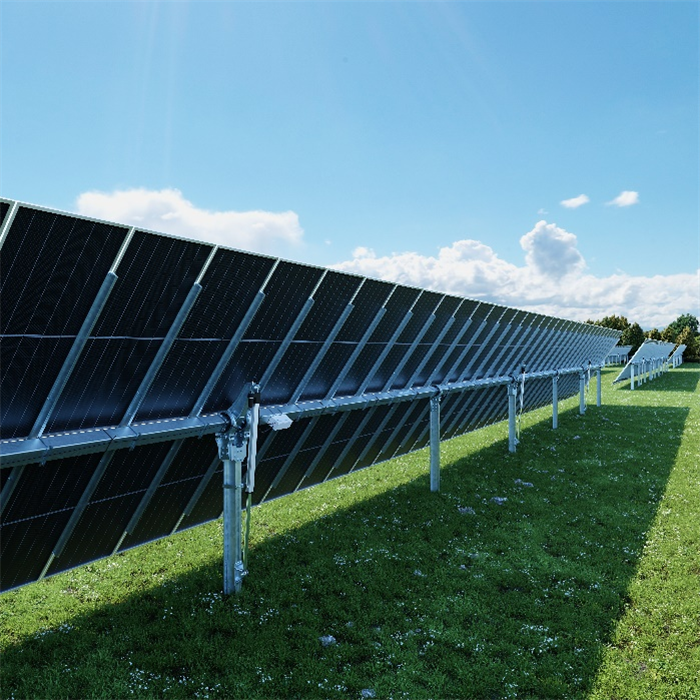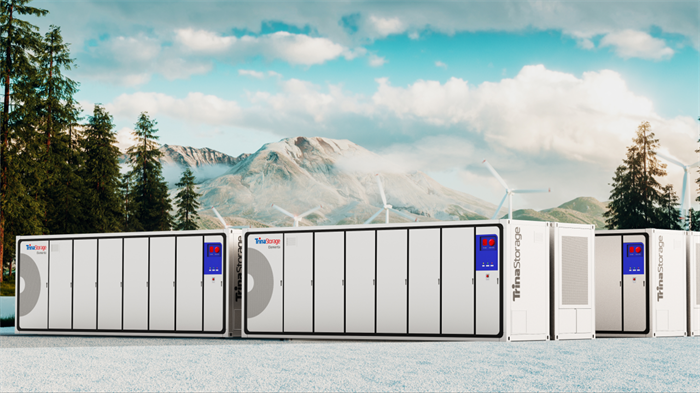
Exclusive interview with Andrew Gilhooly, Head of Utility, Commercial and Industrial Solutions for Asia Pacific at Trina Solar, by SolarQuarter.
Could you please provide some information about the latest products that Trina Solar is introducing in the Asia Pacific region? What distinguishes them from other market solutions?
Trina Solar has been in business for more than 25 years and is synonymous with solar modules. But in response to market demand – especially for integrated solar solutions – it decided a few years ago to expand its product offering, to take a unique leadership position in the industry and become the only solar module manufacturer that can provide an integrative module and tracker solution. Besides solar modules and trackers, Trina Solar has expanded its solution offering to include energy storage, namely “Elementa”.
In terms of the latest products, it has launched the second-generation Vanguard 2P tracker.
The first-generation Vanguard 2P tracker was powered by a single electric motor that operated multiple drivepoints through a mechanical drivetrain.
The second-generation Vanguard 2P tracker achieves the perfect angle alignment through the mechanical action of three actuators powered by individual motors, significantly reducing the number of mechanical parts, making the tracker quicker and easier to install, and reducing maintenance costs over the product’s lifecycle.

Vanguard 2P Multi-Motor Tracker
The Vanguard 2P tracker and modules also come with TrinaTracker’s Trina Smart Cloud SCADA system so operations and maintenance diagnostics can be performed remotely in real time.
How do you see these new solutions addressing the region’s specific energy challenges and opportunities, such as rising demand for Solar energy, grid integration, and energy storage?
While the cost of solar energy has declined significantly over the past decade, for the industry to continue to grow at the same pace and truly displace conventional forms of power generation, it is important that the cost of solar energy continues to reduce.
Trina Solar’s SuperTrack intelligent algorithm that optimizes the module tilt – to maximize light absorption and electricity generation, using topographical and machine learning from real time data on weather and interrow shading – can achieve a further 3-8% energy gain. This restores the overall advantage of tracking, with bifacial modules, back to 15-20%.
For sites with excessive wind or requiring the very highest installation capacity, such as those connected to batteries that require high power density to improve the charge discharge cycling of the batteries, Trina Solar provides its FixOrigin, a ground fixed tilt system. It can also be orientated east/west to maximise installation capacity per unit area. Unlike many fixed solutions it, like the tracker, has been designed for optimal bifacial performance and long-term reliability.
Finally, Trina Solar recently launched its vertically integrated Elementa Battery Energy Storage Solution, enabling customers to generate more energy from modules and tracker solutions in peak daylight hours, store and discharge at times of higher grid demand.

Trina Storage Elementa
Can you explain the key features, technical specifications, and superior performance of these new solutions, as well as how they cater to the diverse needs of customers in the Asia Pacific region?
Offering an integrated solution – that includes the modules, trackers and energy storage – is important to customers in many markets in Asia Pacific. For example, some customers require advanced solutions to unlock ever increasingly challenging sites such as those that: are spatially constrained, have high or cyclonic wind, are rocky or have uneven terrain, are prone to flooding, etc. Customers take a long-term view, so they appreciate the latest technology from Trina Solar and its ‘one stop shop’ solutions backed by the solar industry’s most bankable brand.
The new generation Vanguard 2P tracker has undergone extensive wind tunnel tests from the world’s leading wind tunnel consultancies. It has the same industry-leading low pile count – as low as seven – per tracker or one hundred piles per megawatt peak as the earlier tracker. This contributes to typically one to two US cents per watt peak lower balance of system (BOS) costs. This is especially the case with sites that have challenging geotechnical properties, like rocky sites requiring concrete or cohesive-less soils requiring deeper embedment. This helps EPCs and installers reduce construction risk and importantly cost, which can then be passed on to the developer and independent power providers.
Trina Solar’s patented spherical bearings are fully articulated and can rotate in all three rotational degrees of freedom. This enables clients to deploy trackers on sites with highly uneven terrain without incurring excessive civil cut and grade costs. This provides long term stability, even on unstable sites with high subsidence.
Because of these advantages, the Vanguard 2P was selected for the 875WM Qatar Energy project which is in a harsh operating environment.
Trina Solar’s Elementa BESS solution utilises a vertically integrated approach back to the raw lithium material. This enables Trina Solar to give clients greater certainty on availability and allocation as compared to competitor solutions that rely on battery cells supplied by third-party original equipment makers. It means competitors have more exposure to upstream supply chain shortages and price volatility.
Meanwhile, Trina Solar has invested heavily in developing proprietary lithium-ion phosphate battery cells and rack solutions. The unique enclosure design, for the energy storage solution, provides integrated fire suppression and water cooling to enable a high energy density, while minimizing land required for the energy storage system.
What strategies or initiatives does Trina Solar have in place to support customers in the Asia Pacific region with these new solutions, such as training, technical support, and after-sales services?
Trina Solar has invested heavily in its solutions business, a core differentiation and a business model that unlocks more customer value. Accordingly, Trina Solar continues to build its APAC team including pre-sales and project management. That said, Trina Solar already has a big regional presence because of modules.
To partner with a solution provider requires more value-added support. That is why Trina Solar provides deep and close support at every step of the clients’ projects. From optimizing layout design and supporting geotech testing at pre-sales to project execution where it sends technicians to train installers and lead the commissioning process.
Trina Solar has also launched a tracker training facility in Sydney for clients, EPCs and installers to familiarize themselves with tracker assembly.
What are Trina Solar’s plans for the Asia Pacific market, particularly in the utility and C&I segments, in terms of product development, market expansion, and customer engagement?
Trina Solar will continue to improve its trackers and BESS offerings, including developing increasingly longer trackers to continue to optimize cost. Later this year Trina Solar will launch its productized C&I module/tracker solution where clients can enjoy the benefits of integrated one stop shop solutions, not just on large utility projects but also on smaller behind the meter projects of a few megawatts.
Trina Solar will also launch its FixOrigin solution to address high wind markets like the Philippines, Taiwan and Bangladesh. Expect continued uptake of TrinaTracker in markets like Malaysia, Japan and Korea. Finally, Trina Solar sees tremendous growth and positive sentiment for its trackers in Central Asia, especially in Uzbekistan, where the proven performance of Trina Solar modules and trackers has contributed to the success of some large projects
(Credits: SolarQuarter)
Relevant Topics
Smart Energy Solutions
delivered straight to your inbox

More Events

